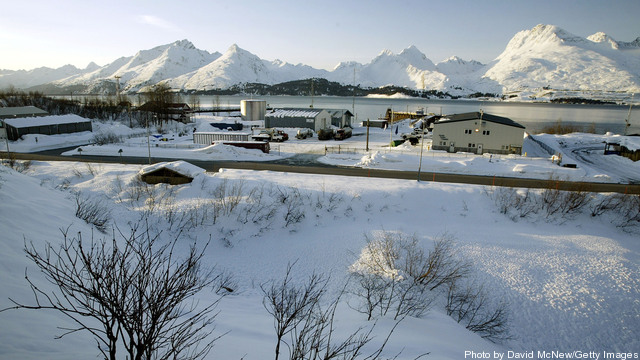
Alaskans’ way of life is threatened as oil production declines and new pipelines for natural gas remain difficult to justify financially.
Larry Persily, Federal Coordinator for Alaska Natural Gas Transportation Projects, said only high oil prices are keeping state royalties from dropping even more. The state gets 90% of its General Fund – some $8 billion last year — from oil and gas royalties. Alaskans pay no income or sales taxes, and get an annual cash rebate from the royalty fund.
The heart of the problem, Persily told a Platts Energy Podium newsmaker session, is that “Alaskans need a natural gas pipeline more than producers need it.”
The $40 Billion Question
US natural gas prices are low and projected to stay that way, due to expanding shale gas discoveries in the lower 48 states. ICF International, in its latest quarterly update, projects prices, currently running below $4 per mmBtu, will go up because that price won’t sustain production, but won’t go above $7 in the mid-term because supply is ample.
That price range makes it difficult to justify spending $40 billion or so on a 1,700- mile pipeline from Alaska’s coast to the Alberta, Canada terminal of the North American distribution network.
TransCanada and ExxonMobil are working with the state of Alaska, which has given up-front financial incentives to get the pipeline built, under a law signed by then-governor Sarah Palin.
Alaska’s Arctic gas deposits are controlled by ExxonMobil, ConocoPhillips, and BP, and most are not developed because there’s no way to get the gas to consumers. The companies would have to commit to drilling wells and shipping the gas by the pipeline for 20 years if the pipeline builders are to get funding.
Under the state timetable, Persily said, the pipeline partners are to file applications for the world’s largest gas treatment plant, which would separate gas and natural gas liquids, and the pipeline with the Federal Energy Regulatory Commission in October. The NGLs can be sold at prices closer to oil than gas, so that may help the economics, he noted, and a 2004 federal law authorizes loan guarantees and tax benefits for the pipeline.
But the three gas producers met with state officials just last week, and the CEOs of ConocoPhillips and BP said afterward that the overland pipeline can’t be justified.
A Turn To Asia
They said they’re turning to a plan to build an 800-mile pipeline from Alaska’s North Slope gas deposits to the southern coast, where they’ll build a liquefaction plant near a tanker port like Valdez. The liquefied natural gas would be shipped to Asia.
Asian markets in the last couple of years have paid up to five times more for natural gas than US markets. The investment question, Persily noted, is whether those prices will still be that high by the time an LNG port and pipeline can be built, or whether Asian countries will have found alternate supplies.
With the shale supply depressing domestic US prices, gas producers in the lower 48 have already gotten Department of Energy authorization to export more than 10% of current US daily usage from liquefaction plants to be built around the Gulf, and pending applications could bring that to 20%. DOE is trying to assess the cumulative effect of this level of exports on the prices US consumers pay, as well as on jobs generated and the US balance of trade.
For analysis of the potential for LNG exports from the US, read a November 2011 story from Breaking Energy.
But Persily noted Alaskan gas can’t affect domestic US prices because there’s no way to get it to consumers without either the pipeline or a West Coast LNG terminal. No such terminal exists. One is proposed for Coos Bay, Oregon, but it was recently converted from an import to an export terminal and, either way, it faces heavy opposition from environmentalists and consumers.
Alaskans, said Persily, aren’t worried about whether the gas goes for export or not. “They just want a pipeline built,” he said, and the royalties to keep coming.
